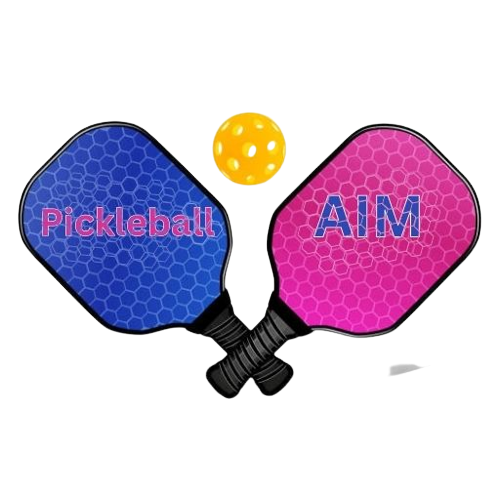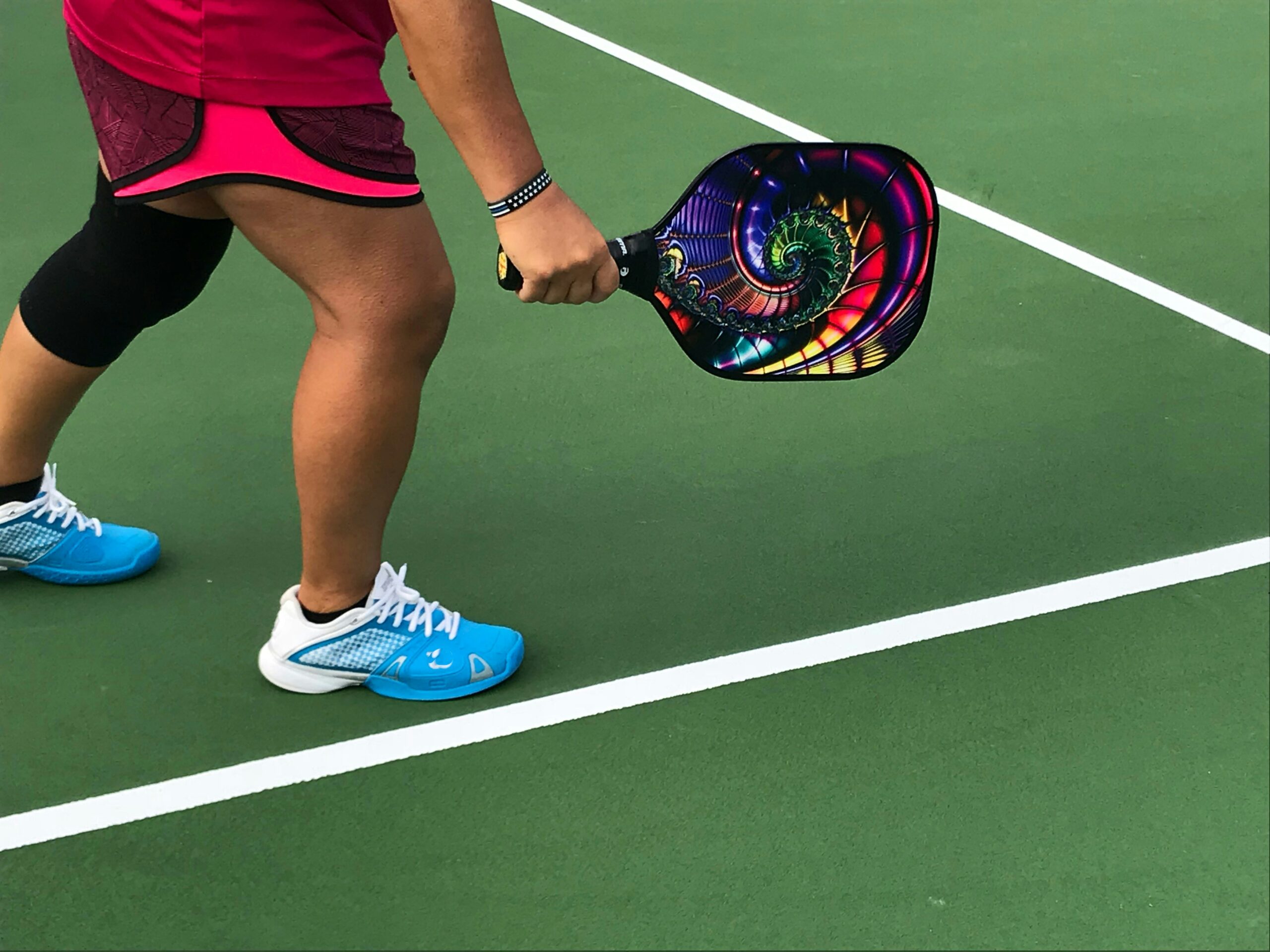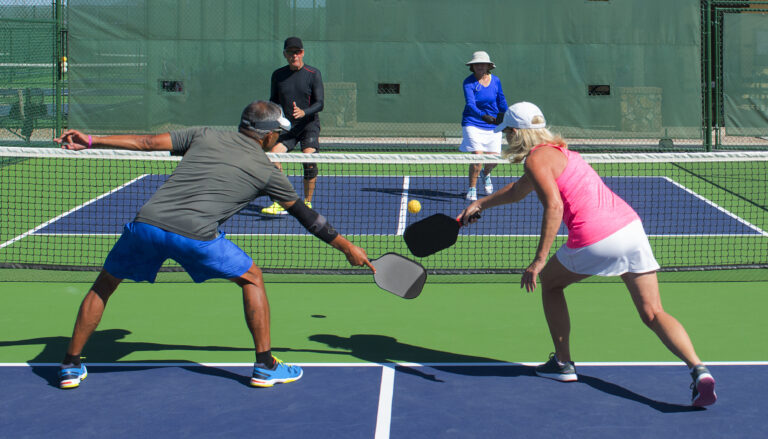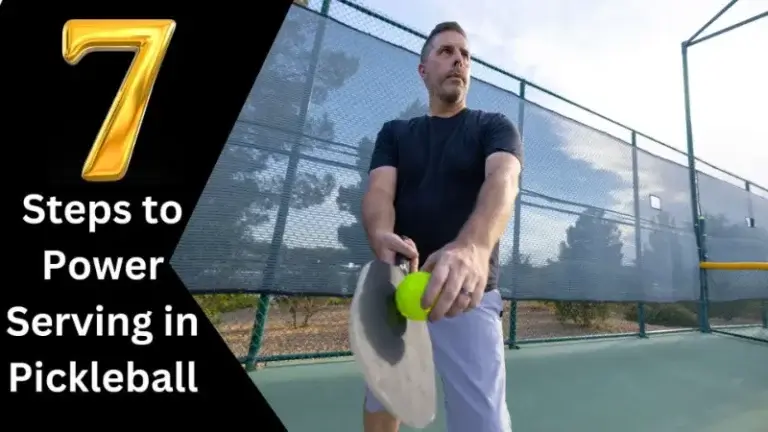Dynamic Duos: Mastering Communication and Positioning in Doubles Pickleball
In the vibrant arena of doubles pickleball, the dance of communication and positioning between partners is as crucial as the paddle in your hand. It’s a symphony of shouts, gestures, and strategic movements, where every step and every word counts towards securing victory. Let’s dive into the art of partner communication and positioning in doubles pickleball, unlocking the secrets to becoming an unstoppable duo on the court.
The Foundation of a Winning Team
At the heart of every successful doubles team in pickleball is a foundation built on effective communication and intuitive positioning. This dynamic duo of skills allows partners to cover the court efficiently, anticipate each other’s moves, and outmaneuver their opponents with grace and strategy.
Communication: The Invisible Thread
- Verbal Cues: Clear, concise communication is pivotal. Use short, easily understandable phrases like “mine,” “yours,” “switch,” or “stay” to make split-second decisions together. Establish these cues early on and practice them until they become second nature.
- Non-Verbal Signals: Sometimes, a look or a hand gesture can convey what words cannot, especially in the heat of the moment. Develop a set of non-verbal signals for serve strategies or positioning adjustments that both partners can easily recognize.
- Pre-Game Strategy Talks: Before stepping onto the court, discuss your game plan. Identify your opponents’ weaknesses, agree on serving strategies, and decide how you’ll handle specific scenarios like lobs or fast volleys.
- Post-Point Reflections: Use the time between points to quickly discuss what worked, what didn’t, and how to adjust your strategy moving forward. This constant feedback loop helps refine your game plan in real-time.
Positioning: Choreographing Your Court Coverage
- The Two-Thirds Rule: In doubles pickleball, aim to cover two-thirds of the court, focusing on the middle and your strong side. This positioning forces opponents to aim for the less predictable sidelines, where they’re more likely to make errors.
- Stacking: This strategy involves positioning both players on the same side of the court after the serve, allowing the stronger forehand player to cover the middle. Stacking requires seamless communication and movement to switch back to standard positioning when necessary.
- Up and Back Formation: While the traditional side-by-side (up-up) formation is effective for net play, sometimes an up-and-back setup can be advantageous, especially against strong baseline hitters. The key is knowing when to transition between formations based on the flow of the game.
- Switching and Pinching: Master the art of switching sides smoothly with your partner to cover more ground and pinch (move towards the center) when needed to cover the kitchen and anticipate soft shots.
Building Your Team Chemistry
- Practice Together: Spend time practicing as a pair. Work on drills that enhance your coordination, such as synchronized groundstrokes, alternating volleys, and lob recovery.
- Play Against Various Opponents: Challenge teams with different styles and strengths. This diversity will test and improve your adaptability, communication, and positioning strategies.
- Review and Analyze: After matches, take time to review key points, discussing what strategies were effective and where improvements can be made. Consider recording your games to analyze your positioning and communication effectiveness visually.
- Trust and Support: Build trust in each other’s abilities and support one another, especially during tough matches. A positive, encouraging partnership can elevate your game and make playing more enjoyable.
Advanced Communication and Positioning Tips
- Anticipate and Adapt: Great teams can anticipate each other’s moves and adapt their strategy on the fly. Work on reading your partner’s body language and being aware of their position at all times.
- Create Misdirection: Use your positioning and non-verbal cues to create misdirection, confusing your opponents about who will take the shot or where it’s headed.
- Positioning for Power: Position yourselves to maximize your strengths. If one partner has a powerful smash, ensure they’re positioned optimally for put-away shots.
- Communication Under Pressure: Develop a calm, clear communication style for high-pressure situations. Practice maintaining your composure and clarity during crucial points.
The Winning Formula
In doubles pickleball, the harmony between partners in communication and positioning is the winning formula. It turns two players into a single, formidable unit, ready to face any challenge with confidence. By cultivating these skills, you and your partner can rise through the ranks, turning every match into an exhibition of teamwork and strategy. Remember, the most successful teams aren’t just those with the best shots but those who communicate effectively and position themselves to complement each other’s strengths. So, lace up, paddle up, and let the dynamic dance of doubles pickleball begin!







